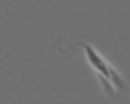(Press-News.org) MADISON, Wis. — Copious corn growing in tiny backyard plots? Roses blooming in December? Thanks to technology that the University of Wisconsin-Madison's Richard Vierstra has been developing for years, these things may soon be possible. And now, new findings out of the genetics professor's lab promise to advance that technology even further.
For the first time, Vierstra and his team have revealed the structure of the plant phytochrome, a critical molecule that detects the light that tells plants when to germinate, grow, make food, flower and even age. Like eyes, the phytochrome is a light sensor that converts sunlight into chemical signals to get these jobs done. By manipulating it, the group can alter the conditions under which all plants grow and develop.
Vierstra's group published the structure in a recent issue of the journal Proceedings of the National Academy of Science. His team also presented its results this month at the annual meeting of the American Society of Plant Biologists in Portland, Oregon.
"It's the molecule that tells plants when to flower," says Vierstra. "Plants use the molecule to sense where they are in the canopy; they use the phytochromes for color vision — to sense whether they are above, next to or under other plants."
Vierstra previously determined the structure of a similar phytochrome from light-sensing bacteria, which guided his work in plants. He already has several patents on the technologies derived from these structures and has been in talks to commercialize them. The determination of a plant phytochrome three-dimensional structure will only accelerate improvements to the technology.
One of the biggest moves in agriculture, Vierstra says, is to be able to grow plants at higher density, allowing producers to plant more crops in a given area, thus saving space and other resources.
Currently, there is a limit to how closely plants can grow relative to their nearest neighbors. At high density, the leaves of one plant shade the other, signaling to the shaded plant it isn't receiving enough sunlight. These plants grow stems and stalks rather than fruits and seeds, becoming long and leggy as they reach for the sky.
That process begins with the phytochrome, which senses the wavelength of light shining on plants. Plants in full sun absorb red light while shaded plants receive only the leftover, far-red light. The type of light the phytochrome "sees" tells the plant whether to stretch out and become taller or to flower and make fruit. Based on the light available, the phytochrome cycles between an inactive and active state.
"Photoconversion between the active and inactive states of phytochromes is arguably the most important twitch on this planet, as it tells plants to become photosynthetic and consequently make the food we eat and the oxygen we breathe," says Vierstra.
Vierstra and his team found that by making specific changes to the light sensor, they can dupe it into staying in its active state longer.
"By mutating the phytochromes, we created plants that think they're in full sun, even when they're not," Vierstra says.
Three decades ago, while a postdoctoral researcher at UW-Madison, Vierstra was the first to purify the phytochrome protein. Now, his work has come full circle. He hopes the research team's findings become the scaffold for a toolkit others can use — one that might fundamentally alter agriculture.
In addition to growers, the research also has implications for other scientists, as the technology could be used to create new fluorescent molecules for detecting minuscule events inside cells, and in the field of optogenetics, which uses light as a tool to drive biological change.
INFORMATION:
The work was supported by grants from the National Science Foundation and the University of Wisconsin College of Agricultural and Life Sciences. The Wisconsin Alumni Research Foundation holds Vierstra's patents on the technology.
Kelly April Tyrrell, ktyrrell2@wisc.edu, 608-262-9772
Tricking plants to see the light may control the most important twitch on Earth
2014-08-04
ELSE PRESS RELEASES FROM THIS DATE:
Daylight is the best medicine, for nurses
2014-08-04
For the health and happiness of nurses – and for the best care of hospital patients – new Cornell research suggests exposure to natural light may be the best medicine.
In a forthcoming Cornell study published in the journal Health Environments Research and Design, Rana Zadeh, assistant professor of design and environmental analysis, discovered nurses who had access to natural light enjoyed significantly lower blood pressure, communicated more often with their colleagues, laughed more and served their patients in better moods than nurses who settled for large doses of ...
Diet change -- A solution to reduce water use?
2014-08-04
Eating less meat would protect water resources in dry areas around the world, researchers at Aalto University in Finland have found.
Reducing the use of animal products can have a considerable impact on areas suffering scarce water resources, as meat production requires more water than other agricultural products.
Diet change together with other actions, such as reduction of food losses and waste, may tackle the future challenges of food security, states researcher Mika Jalava from Aalto University in Finland.
Growing population and climate change are likely to ...
Cell plasticity may provide clues to origin of aggressive type of breast cancer
2014-08-04
INDIANAPOLIS -- Healthy breast cells may be able to reinvent themselves -- some have the flexibility to change after they are mature -- which leads researchers to postulate that similarities exist between this occurrence and the origins of a particularly aggressive type of breast cancer.
A team of researchers, led by Candice A.M. Sauder, M.D., while a resident at the Indiana University Department of Surgery, reported online in BMC Cell Biology that healthy breast cells separated from their normal environment were able to transform into types of cells similar to those ...
Students cope well with healthier snacks
2014-08-04
Students do not mind buying healthier snacks from vending machines, according to research published in the International Journal of Food Safety, Nutrition and Public Health. The findings could have implications for campus health initiatives as well as vendor profits.
The common stereotype of the busy student is of someone who will grab a junk food snack between lectures and rarely chooses a decent, hot meal over a chance to share a beer or two with fellow students. If the stereotype is an obvious generalization, one point remains true, snacks from vending machines on ...
Diabetes: A duo helps better
2014-08-04
Various active substances in oral antidiabetic agents are frequently combined in the treatment of diabetes in order to achieve an effective reduction in the blood sugar. A new, very promising approach combines the substances metformin and SGLT2 inhibitors, the latter were just approved in 2012. Scientists headed by Dr. Susanne Neschen and Prof. Dr. Martin Hrabě de Angelis from the Helmholtz Zentrum München, in cooperation with Ludwig-Maximilians-Universität München and drug manufacturer Sanofi Aventis, have discovered how the two substances reinforce each other.
Medicinal ...
Drilling in the dark: Biological impacts of fracking still largely unknown
2014-08-04
MADISON, Wis. – As production of shale gas soars, the industry's effects on nature and wildlife remain largely unexplored, according to a study by a group of conservation biologists published in Frontiers in Ecology and the Environment on August 1.
The report emphasizes the need to determine the environmental impact of chemical contamination from spills, well-casing failure, and other accidents.
"We know very little about how shale gas production is affecting plants and wildlife," says author Sara Souther, a conservation fellow in the Department of Botany at the ...
New insights into why adolescents carry meningitis-causing bacteria
2014-08-04
University of York scientists have shed new light on why teenagers and young adults are particularly susceptible to meningitis and septicaemia.
The team from the University's Department of Biology has discovered a novel metabolic pathway in the bacterium Neisseria meningitidis that may explain why this age group is particularly at risk of infection.
The results of the research, which was supported by the Centre for Chronic Diseases and Disorders (C2D2), are reported in the journal Molecular Microbiology.
N. meningitidis is a major cause of meningitis and septicaemia, ...
Researchers find potential new predictor of stress-related illnesses
2014-08-04
SAN ANTONIO (Aug. 2, 2014) ― Scientists studying depression in teens have discovered that subtle changes in a gene can predict how the brain reacts to stress, which can cause such health issues as depression, post-traumatic stress disorder and obesity.
The research, published Aug. 2 in the journal Nature, focuses on two longitudinal studies led by Douglas E. Williamson, Ph.D., from The University of Texas Health Science Center at San Antonio, and Ahmad Hariri, Ph.D., from Duke University. Scientists from Columbia University and the University of Pittsburgh are ...
Key adjustment enables parasite shape-shifting
2014-08-04
VIDEO:
Researchers show that suppressing expression of a key protein causes major changes in the shape of T. brucei (shown here), the parasite that causes African sleeping sickness.
Click here for more information.
Crafty parasites frequently undergo dramatic shape changes during their life cycles that enable them to adapt to different living conditions and thrive. But these transformations might not be as difficult as they appear, according to a study in The Journal of Cell Biology.
African ...
It's not rocket science. Oh wait, it is
2014-08-04
WASHINGTON, August 4, 2014 — This week, Reactions is blasting off with an episode that's all about rockets. Featuring Doane College Postdoctoral Fellow Raychelle Burks, Ph.D., we examine the chemistry of solid and liquid propellants, orbital maneuvering and the "ride-able explosion" that is a rocket launch. You can "launch" the video at: https://www.youtube.com/watch?v=Yqiq2lQrqGI.
INFORMATION:
Subscribe to the series at Reactions YouTube, and follow us on Twitter @ACSreactions to be the first to see our latest videos.
The American Chemical Society is a nonprofit ...



